Being able to add an image, some fancy script, or anything else to mixed media piece is why I have been drawn to image transfers. But I’m impatient and the image transfer process has never been very successful for me, until now.
I stumbled upon InkAid’s process using Transferiez solution and now I can do an image transfer quickly, within two minutes! I’ve got the entire process for you and what you need to know to get started. And InkAid has a starter kit you can order to just try a little of this to see how you like working with it.
You might also want a few images to try the process out with, so I’ve put together a sheet of them for you. You can sign up to have them emailed to you here. Also, there’s a pdf of the steps so you can have that right next to you as you’re doing it.
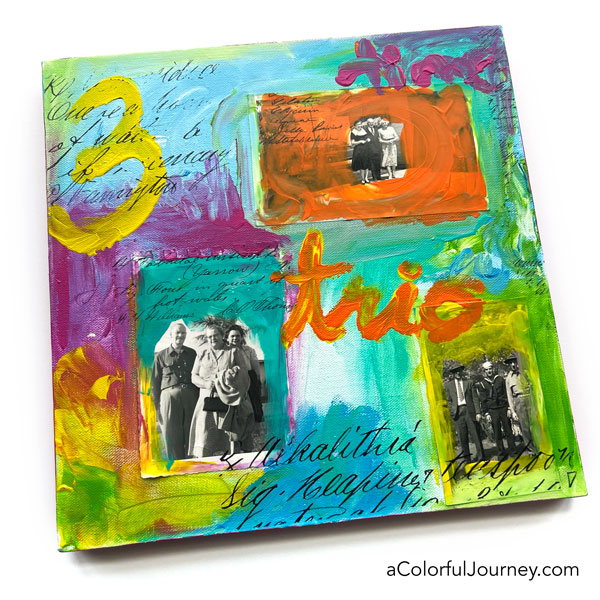
I tested it out the process on this canvas by adding the fancy vintage writing as transfers. On the painted, mixed media surface, it transferred! This stuff will transfer onto painted surfaces, old book text, fabric, metal, wood, just about any mixed media surface!
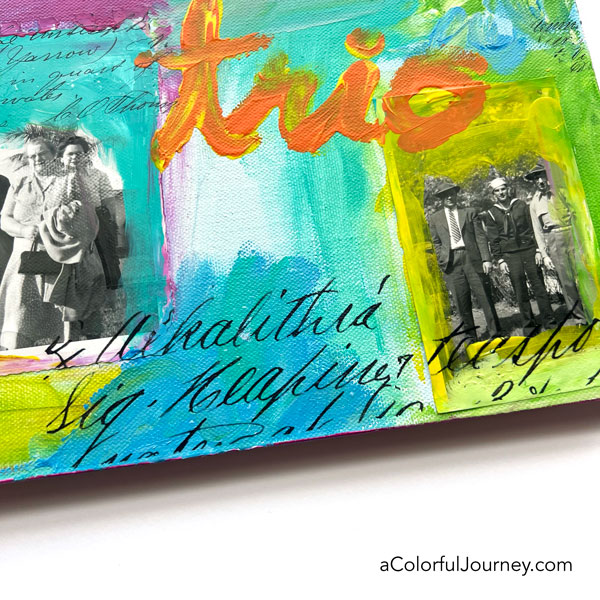
To create an image transfer you’ll need:
- the Transferiez solution mixed in a jar with a tight lid
- an inkjet printed image printed on InkAid’s Transfer Film (preferably pigment based).
Printing on the Transfer film.
The transfer film has a coating on one side. You want to print on that side using an Inkjet printer.
Did you know inkjet printers have two kinds of ink? Pigment or dye.
I’ve done this will both dye and pigment based printers and they work, but the pigment based works best. And if you never realized that inkjet printers have two kinds of ink in them, me either until I started doing this!
Check if your printer uses pigment or dye based ink simply by googling: Is (enter the make and model of your printer) ink cartridge pigment ink? Keep reading to see impact of the two types of ink. It wasn’t what I expected.
Reversing Text: If you’re transferring anything with words, you’ll need to reverse the image. Often printers have an option to reverse or mirror the image or you can use a photo editing software.
To create the Transferiez solution you put 4 ounces of 91% isopropyl alcohol in a jar. Next, add 1 tablespoon of the Transferiez concentrate. Put the lid on and mix by swirling the jar. The lid is important so the alcohol doesn’t evaporate.
The liquid will become cloudy and will need 3-4 hours to fully bond, bind or do whatever it does to become clear and thicken up. It’s a good idea to swirl the jar every now and then during those 3-4 hours. But after that, it’s all ready to go, no waiting!
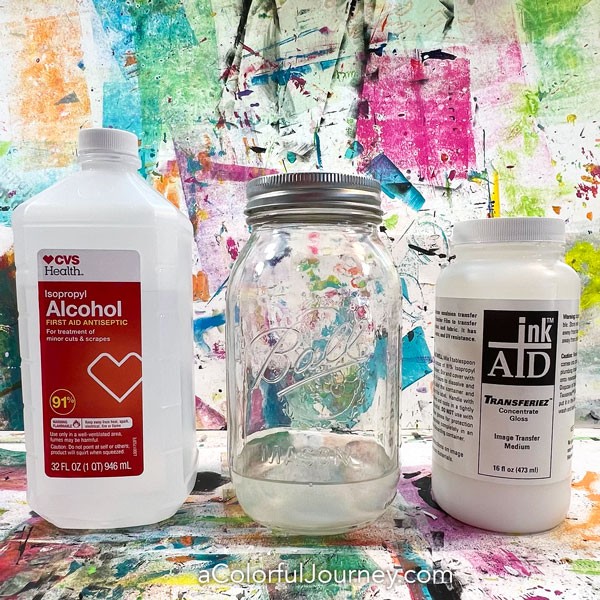
InkAid says it will last a 2-3 days but what I’ve found is it lasts a lot longer than that. I suspect that is because I keep the lid on it to prevent as little alcohol from evaporating as possible. But what makes it not “good” or not work? When the solution gets cloudy. So long as the solution is clear, it’s good to use! I’ve had a jar of it for over a month and it was still clear and worked great.
Now that the Transferiez solution is ready, let’s make a transfer!
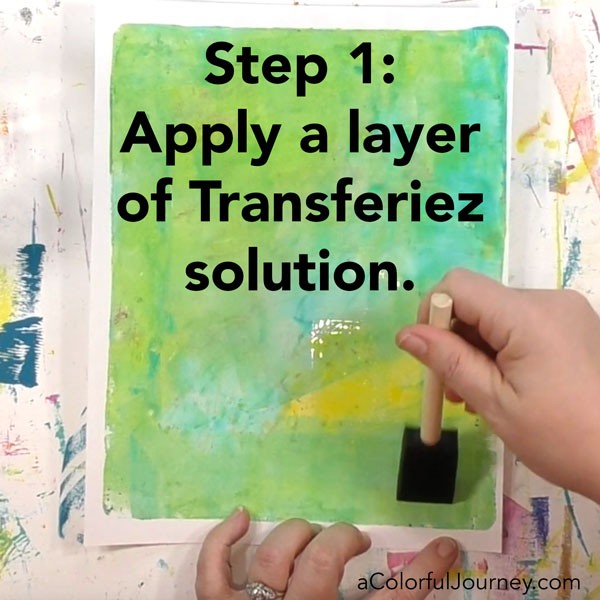
Step 1: Apply a layer of Transferiez solution with a foam brush. I try to cover an area larger than my image. You’ll want the area fully covered and juicy, but not too much or too little. Later in this post, I explain more about that.

Step 2: Apply the Transfer film print side down. If you’ve got words or text, you’ll need to reverse those before you print. Often printers have a mirror or reverse image setting that will do it for you.
Step 3:You’ll want to gently press the image down. I am very inconsistent when I used my hands so I prefer to very gently use a brayer to roll over it.

Step 4: Wait 2 minutes then slowly lift the Transfer film.
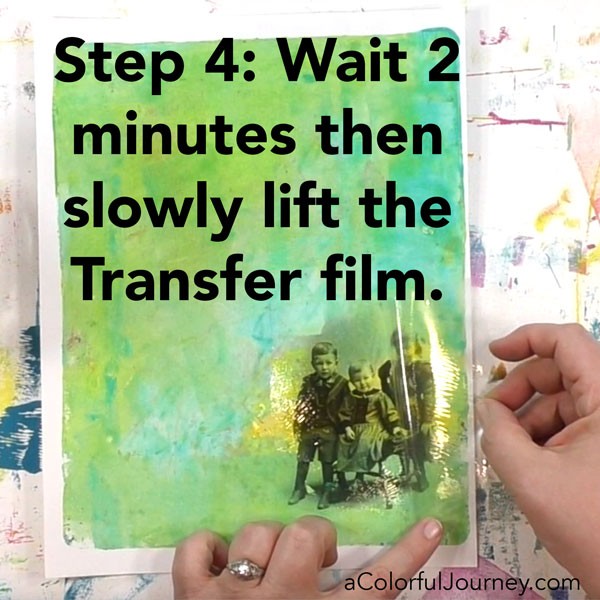
Is it hard to get the proper amount of Transferiez solution? This is actually a forgiving process. I tested if anyone could do this by showing Dave, the husband, how to do it and letting him try. He nailed it first time even though he no confidence he was getting the “right” amount of solution on there.
But what happens if you use too little or two much Transferiez solution? Well, too little means very little of the image will transfer. Too much means it can slip and slide and distort more easily. So how do you figure out the best amount for you to use? Trying it a couple of times. That’s where the InkAid starter pack is so handy. 6 sheets of Transfer film and more than enough Tranferiez concentrate to do it.
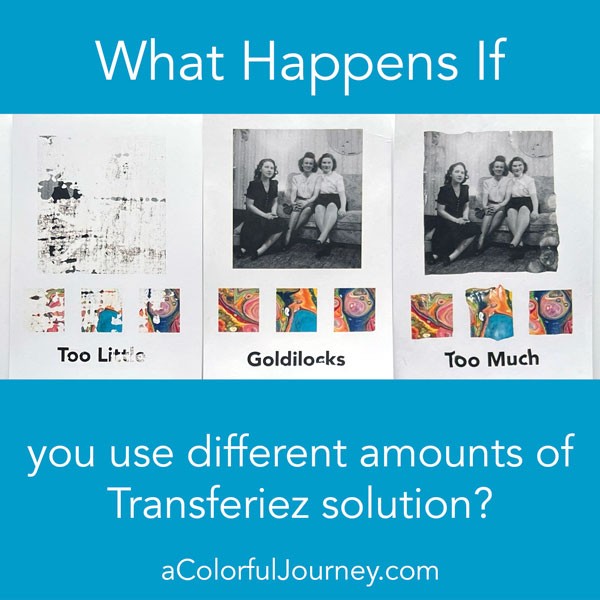
Pigment vs. dye inks
Apparently, inkjet printers can have two kinds of ink, pigment or dye. I did a side by side experiment to see what difference it made using pigment or dye inks to the transfer process.
What I found is that dye based ink would smear more easily. That’s why the white writing in the pink is so blurred on the right side, it was dye ink. The pigment ink on the left, held all the detail. Also, notice the detail in the others colors in the pigment ink compared to the dye based image.
But then I expected that to happen with the second set of images, and they didn’t smear the same way. But the image didn’t transfer as well either. So my take away is that dye based ink is very unpredictable compared to pigment ink.

So what does this mean for you? If you’ve got an inkjet printer that has all dye inks, you can still do transfers, it just may be more unpredictable. If you’ve got an inkjet printer that has pigment black and dye colors (a common thing I found out), then you can get more of a pigment ink look when doing black and white and then colors are less predictable.
This is where the starter pack from InkAid is so helpful, for you to give it a try using your printer. And if you’re wondering what to print on the Transfer film, I’ve got a free sheet of images I can email to you. I’ll be sharing more image transfer play and videos, so keep an eye out for those!


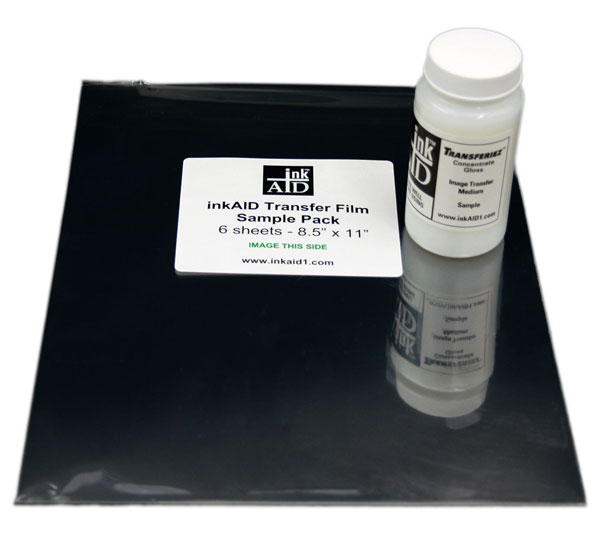

Interesting! Is the film reusable or do you need a new sheet for every transfer?
A piece of transfer film can only be used once Diana, because it there is a coating on the Transfer Film that is used up when you do an image transfer. What is that coating? No idea what it is made of, just know it is needed for the process to work.
That’s kind of what I figured but I had to ask to be sure. The sheets aren’t exactly inexpensive. I’ll keep this method as a last resort if I can’t get anything else to work correctly.
Carolyn, Great video (as always). I just wanted to say thank you for being so generous with sharing your knowledge, experiences and OOPS-es (if that’s a word). We all learn so much thanks to you. I do a lot of image transfers in my work and I’m always interested in learning a new technique. And a simple one at that! Cheers!
You’re very welcome Nancy! So glad you enjoy the play and the OOPSies!
Are the transfer sheets a must for this process or can you use the solution to transfer images from other media, such as photos or magazine pages?
You do need the transfer film to do the InkAid process.
Great Info…thank you!
Hi Carolyn! Can’t wait to try this! I’ve been “fairly”successful with transfers, but only about grade C…Have you tried leaving a dye based printer film down longer than 2 minutes? Maybe that will keep the detail and and reduce the loss of transfer?
I have the dye based longer and had similar results Deanna but I found the dye based to be very unpredictable, so I image it could be slightly different for different brands of ink as well.
How very interesting thank you. Have you tried painting over the transfer, once it is on the canvas? I was wondering if I could use this method as an outline for a painting, instead of having to sketch first. Any idea please?
Great question Kathy! Once a transfer is totally dry I have painted over parts or edges of a transfer with no problem. Haven’t painted over the entire thing but I would think you could.
Hi Carolyn! I have ordered the Starter Kit and I even got an email from Jim. Am so looking forward to trying this. Thank you!
Nice company right! Have fun playing Sheri!
Carolyn, your vide0s are so informative. Great tips that have inspired and improved my practice.
It looks like some kind of emulsion. It needs alcohol to dissolve the pigment, which is why pigment works best. I’m guessing, I’m not a chemist, so I could be wrong. I did order a sample kit to play with. I have questions…!
Does this work on curved surfaces, such as something cylinder shaped?
Thanks for the info. I enjoyed your video.
You do a wonderful job explaining different techniques, thank you.
Jeanne
Thank you, Carolyn! I just ordered the starter kit. Your videos are great, I always learn so much from you.
hi your vids and info are great! however i’ve had no luck today and have used up 4 of my six transfer sheets. i’m trying to transfer onto a copper sheet metal. it’s thoroughly cleaned and my medium is mixed to the right 4 oz to 1 tblspoon ratio. waited 3+ hours . but everytime i print out my artwork and attempt to transfer i only get a very small amount of ink (pigment btw) left on the copper .. i have no idea what im doing wrong
My first thought is that you’re not using enough of the Transferiez solution on the copper but without seeing it, I’m guessing. I am making an assumption that you’re using an inkjet printer with pigment ink, that you’re printing on the proper side of the transfer film and putting the printed side down when you do the transfer. If this doesn’t solve it for you, the best thing to do is reach out to the company- they are extremely responsive!
Another great video from Carolyn. Loads of information and really helpful step by step. This has given me more confidence to get started with the product.
Thank you for your very well-done videos – jI’m encouraged to follow my goal of creating art in new and interesting ways – your videos and links were very helpful